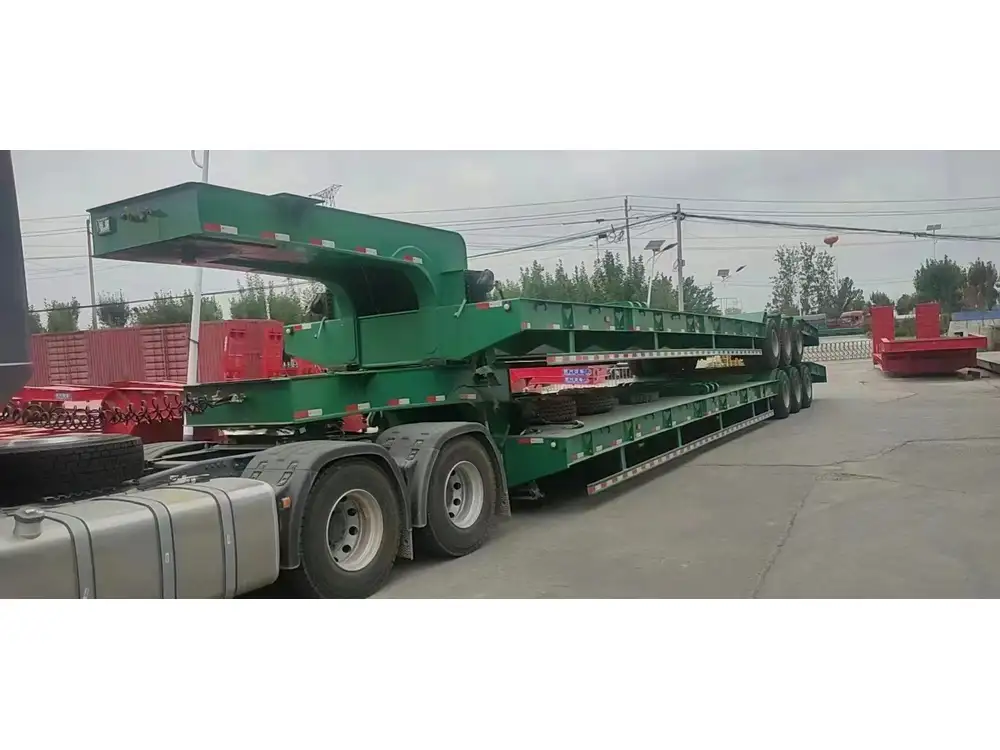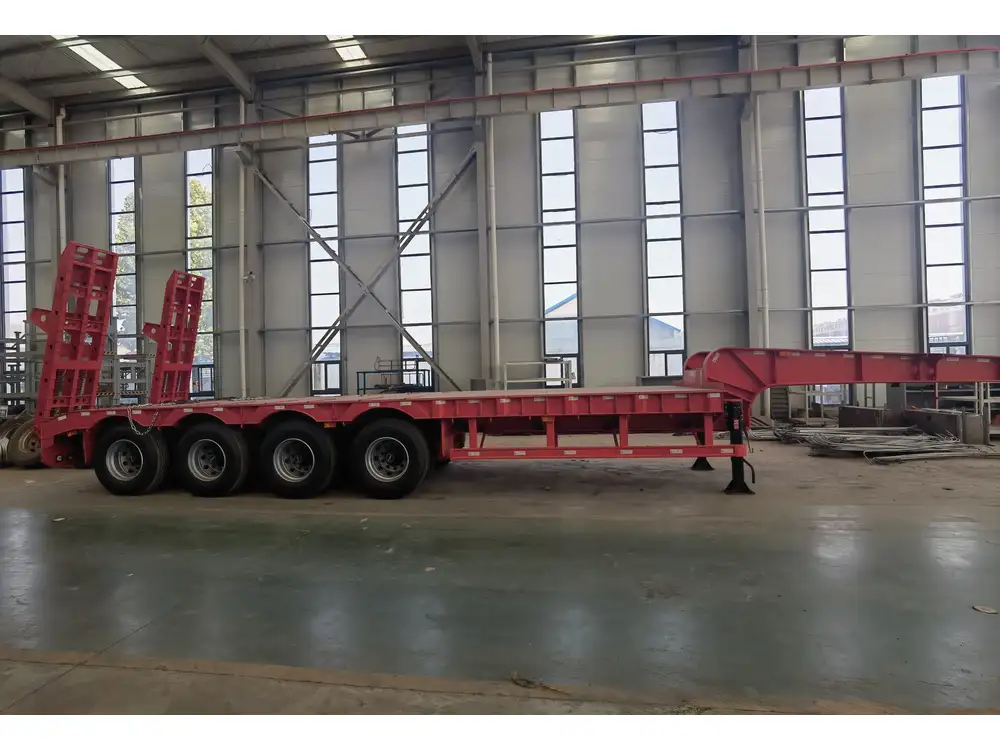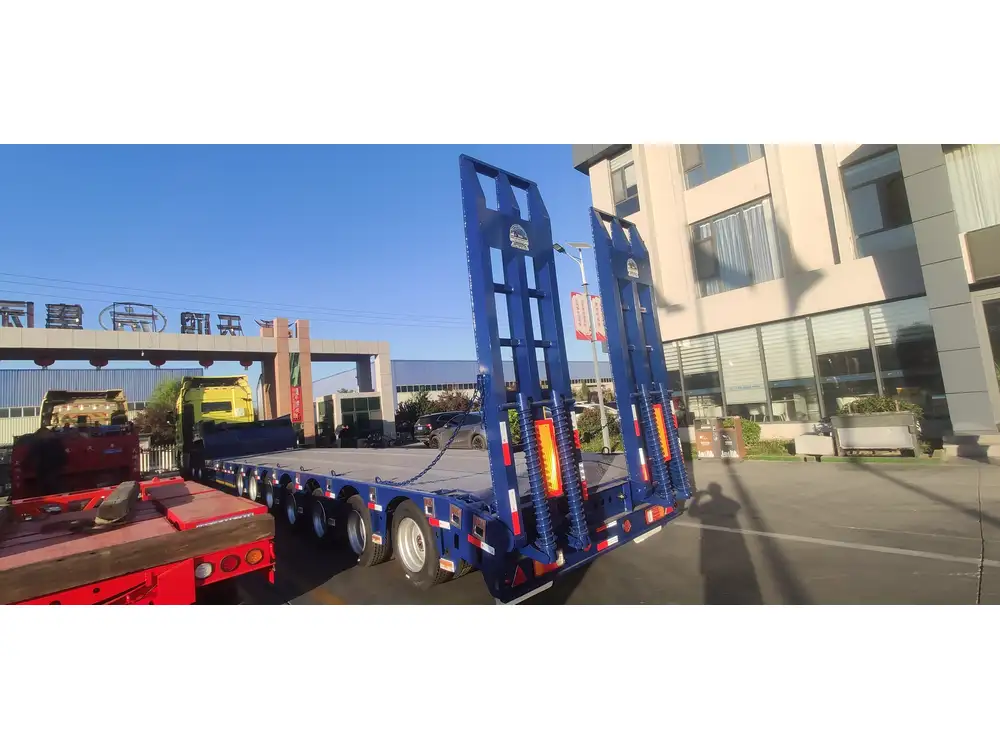Understanding the dimensions of semi-trailers is essential for logistics, transportation management, and compliance with legal regulations. Whether you’re a fleet manager, a logistics coordinator, or simply curious about the specifications, knowing how long these vehicles can be is crucial. Here, we dissect various aspects of semi-trailer lengths, their classifications, and what this means for the industry.
1. Overview of Semi-Trailers
1.1 Definition of a Semi-Trailer
A semi-trailer is a trailer that relies on a tractor unit to support a significant portion of its weight. Unlike full trailers, which can stand alone, semi-trailers are attached to a tractor via a fifth wheel coupling, allowing for more flexible maneuvering and weight distribution. Typically utilized in freight shipping, these trailers come in multiple configurations designed to carry various types of loads.

1.2 Importance of Trailing Dimensions
- Legal Compliance: Knowledge of the length is critical for maintaining compliance with federal and state regulations pertaining to transport sizes and weight limits.
- Cost Efficiency: Selecting the appropriate semi-trailer size can reduce operational costs and improve fleet management efficiency.
- Loading and Unloading Efficiency: Understanding the dimensions of semi-trailers helps in planning loading and unloading procedures effectively.
2. Standard Lengths of Semi-Trailers
The length of a semi-trailer can vary significantly depending on several factors, including type, design, and intended use. Here are the most common types and their standard lengths:
| Type of Semi-Trailer | Length Range |
|---|---|
| Flatbed Semi-Trailer | 48 – 53 feet |
| Dry Van Semi-Trailer | 48 – 53 feet |
| Refrigerated Semi-Trailer | 48 – 53 feet |
| Tanker Semi-Trailer | 40 – 50 feet |
| Lowboy Semi-Trailer | 40 – 50 feet |
| High Cubes | 53 – 57 feet |
2.1 Flatbed Semi-Trailer
Flatbed trailers are often used for oversized or bulk cargo, and they typically measure between 48 and 53 feet. They vary in height and feature no sides, making loading and unloading convenient via cranes or forklifts.

2.2 Dry Van Semi-Trailer
The most common type used in freight transport, these enclosed trailers also range from 48 to 53 feet. They provide protection from weather and theft, which is particularly beneficial for sensitive cargo.
2.3 Refrigerated Semi-Trailer
Reefers, as they are colloquially known, are designed to transport temperature-sensitive goods. Their lengths usually mirror dry vans, generally being 48 to 53 feet.
2.4 Tanker Semi-Trailer
Typically utilized for transporting liquids, such as fuel or chemicals, tanker trailers range around 40 to 50 feet. The design allows for both safety in transport and compliance with hazardous material regulations.

2.5 Lowboy Semi-Trailer
Lowboy trailers are designed with a lower deck height, allowing for the transport of heavy machinery. The standard length for lowboys generally falls between 40 and 50 feet.
2.6 High Cubes
High cube trailers are often used for exporting goods and offer more interior height for increased cargo volume. These generally measure between 53 and 57 feet.
3. Regulations Governing Semi-Trailer Length

3.1 Federal Regulations
The Federal Highway Administration (FHWA) regulates the maximum length of semi-trailers for interstate transport:
- Overall Length: 65 feet overall for tractor-trailer configurations.
- Trailer Length: 45 feet for semi-trailers and 28.5 feet for each trailer in a twin trailer setup.
3.2 State Regulations
States may have varying regulations that could allow longer combinations in specific circumstances. For example, some states permit longer trailers on designated highways. It’s imperative for companies to consult local laws to ensure compliance, as violations can result in hefty fines.
4. Weight Limitations Considerations

4.1 Maximum Weight Regulations
While understanding semi-trailer lengths is vital, knowing weight limitations is equally crucial. The federal gross vehicle weight limit for a semi-trailer combination is typically 80,000 pounds on interstate highways:
| Trailer Composition | Maximum Weight |
|---|---|
| Single Axle Truck | 20,000 pounds |
| Tandem Axle Truck | 34,000 pounds |
| Trailer (max total) | 80,000 pounds |
4.2 Implications of Weight and Length
The relationship between length and weight affects maneuverability and safety on the road. Longer trailers may struggle with tight turns or may require larger turning radii, impacting urban delivery logistics.
5. Practical Applications of Semi-Trailer Lengths

5.1 Choosing the Right Length for Your Needs
Selecting the proper semi-trailer length is critical for maximizing efficiency in freight operations.
Cargo Type: Consider cargo dimensions and weight. Longer trailers can accommodate more but must comply with weight limits.
Route Planning: Assess road and bridge restrictions in your planned routes to avoid exceeding legal dimensions.
5.2 Semi-Trailer Rental Options
For fluctuating demand, renting semi-trailers can be a beneficial alternative. Suppliers typically offer trailers in various sizes and lengths, allowing for flexibility based on shipment requirements.
6. Future Trends in Semi-Trailer Design

6.1 Innovations in Fifth Wheel Technology
Advancements in coupling technology promise to provide better safety, with improved connections reducing wear and tear on both the tractor and the trailer.
6.2 Increasing Demand for Specialized Trailers
Different industries are demanding specialized trailers that can accommodate unique requirements:
- Ultra-High Volume Trailers: Tackling the need for more cargo without exceeding federal dimensions.
- Automated Trailers: Utilizing robotics and AI for improved safety and efficiency.
7. FAQs About Semi-Trailer Lengths

7.1 What is the most common length of a semi-trailer?
The most common lengths are 48 and 53 feet, as they strike a balance between capacity and maneuverability.
7.2 Are there different lengths for different states?
Yes, state regulations can vary significantly, with some states allowing longer combinations or additional exemptions for specific vehicle types. It’s advisable to consult local laws.
7.3 Can a semi-trailer be longer than 53 feet?
While 53 feet is a common maximum for most trailers, regulations do allow for specific exemptions in certain circumstances or for specialized equipment.

7.4 How does the length affect freight costs?
Longer trailers can reduce the cost per shipment because more cargo can be transported simultaneously. However, this must be balanced with weight limitations and legal restrictions.
Conclusion
Understanding the dimensions and regulations surrounding semi-trailers is indispensable for anyone involved in logistics and transportation. Compliance with legal standards, choosing the right trailer size, and recognizing the implications of trailer length are all vital in ensuring efficient operations. As technology evolves and regulations change, staying informed will give companies the competitive edge needed in an increasingly complex industry.
For further assistance or inquiries regarding semi-trailer specifications and regulations, feel free to reach out. Our team of experts is dedicated to providing tailored solutions to meet your logistical needs effectively.



